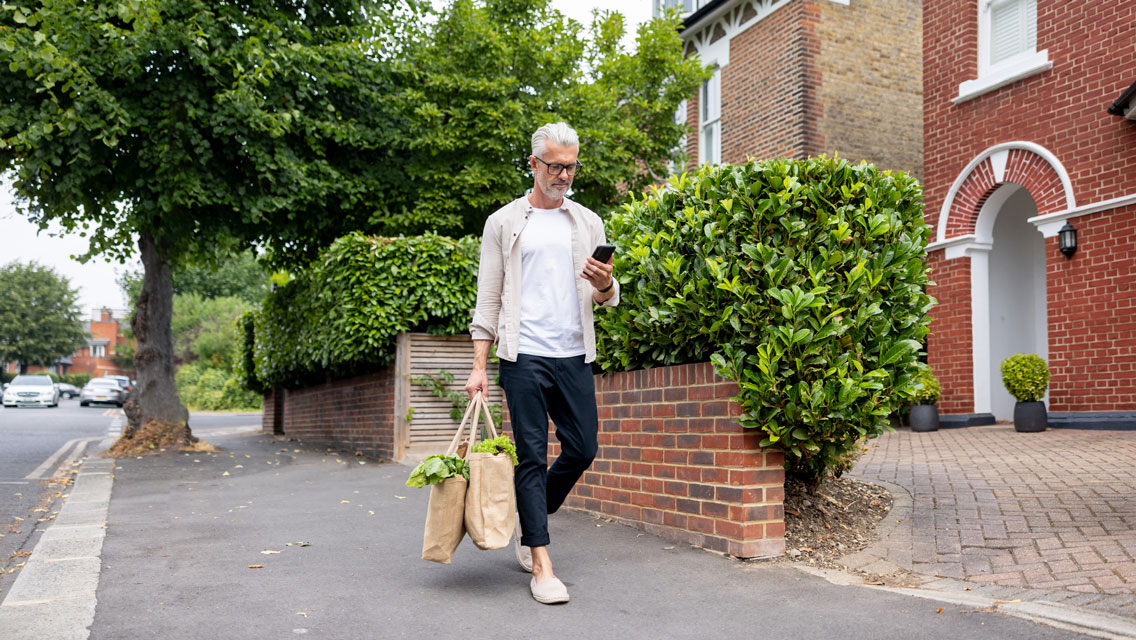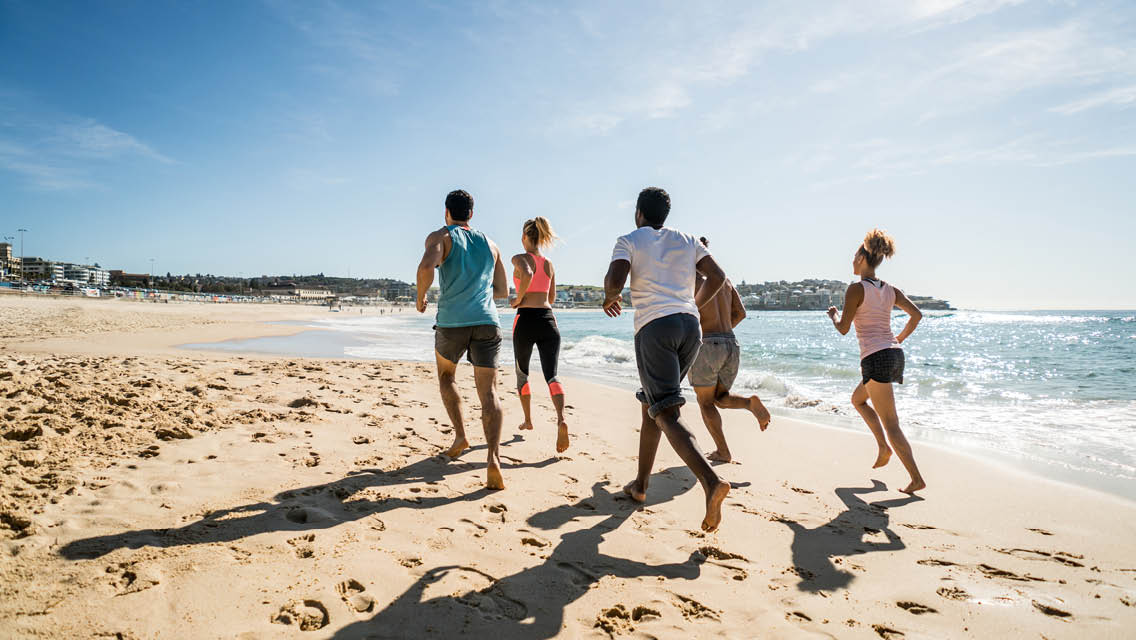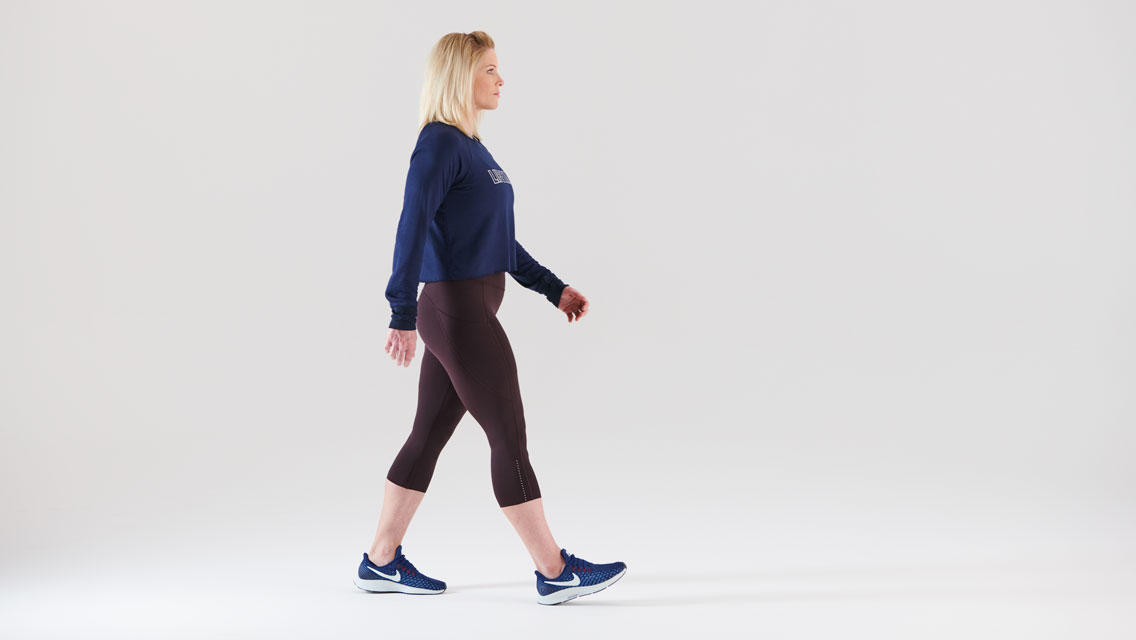When I moved to Minneapolis from the Chicago suburbs in the summer of 2000, I anticipated strolling along the pedestrian paths that surround the city’s many lakes, walking my dog to the local park and traipsing through town on errands. It didn’t happen.
Minneapolis has more parks and trails than most major metro areas, but they happened to be a car’s journey away from my particular neighborhood, as was the nearest business district. In other words, despite my hopes and best intentions, walking became fabulously easy for me to put off.
Five years and 15 pounds heavier, I moved to Washington, D.C. — a city considered comparatively less healthy than Minneapolis — and was surprised to find myself walking more than I ever did back in my old neighborhood. So what happened? The short answer: I took the path of least resistance, and in D.C., that happened to be the more active path.
Living as I do in the bustling Adams Morgan neighborhood, walking is simply easier here than trying to negotiate D.C.’s traffic and parking miasma. If I want to rent a DVD, buy an apple or grab a cup of coffee, hiking the five blocks to the main drag in Adams Morgan is actually faster than driving my car.
To be honest, when I first started huffing and puffing my way through the city, the thought bubble that appeared above my head looked something like this: #$%!!&%#! But walking has become my favorite thing about living in the nation’s capital. When I’m hungry, I just slip on a pair of sneakers, grab my collapsible grocery cart, and I’m back with nutritious whole foods in less than 20 minutes. In my new neighborhood, I’m happy to find, the easier, more convenient option also happens to be the healthier one.
More and more, we are starting to realize that the neighborhoods and communities we choose to live in can be an important factor in our personal health. Indeed, where we live can directly affect what we eat, how much we exercise and how we spend our leisure time.
Take the 2004 study by the RAND Corporation, a nonprofit health-policy research organization that sampled more than 8,600 people in 38 metropolitan areas of the country. It found that people who live in more sprawled-out, car-dependent metro areas, like Atlanta and Detroit, for example, are more likely than those in higher-density areas, such as Portland, Ore., and San Francisco, to have chronic health problems like high blood pressure, arthritis, headaches and respiratory problems. As former U.S. Surgeon General David Satcher has said, “There is a recognition that individuals cannot be healthy if they live in unhealthy communities.”
Of course, you can’t pin our nation’s health problems solely on where we happen to live. Americans work more and vacation less than any other industrialized nation, so it’s understandably difficult to consistently take a morning bike ride or an evening stroll. Add to that our increasing tendency to plop down in front of the TV with a carton of takeout as soon as we get home from work, and it’s clear that many factors contribute to our nation’s collective weight gain — no matter where we live.
At the same time, says Richard J. Jackson, MD, MPH, former director of the National Center for Environmental Health at the Centers for Disease Control, we can absolutely improve our personal health by improving how we design our communities.
“There is a connection . . . between the fact that the urban sprawl we live with daily makes no room for sidewalks or bike paths and the fact that we are an overweight, heart-disease-ridden society,” Jackson writes in “Creating a Healthy Environment: The Impact of the Built Environment on Public Health,” a recent study he coauthored with Chris Kochtitzky, MPH. “Land-use decisions are just as much public-health decisions as are decisions about food preparation.”
Land-use decisions? Sounds pretty wonky.
And yet many professionals from many walks of life — architects and developers, doctors and public health professionals, community leaders and policy-makers — are starting to believe that one of the keys to improving personal health is to make better decisions when it comes to things like zoning, community design and transportation. All of these seemingly abstract issues directly influence our built environment: the distances we travel to work, the number of nearby grocery stores and parks, and the safety of streets where we’d like to take those evening strolls, for example.
Most of us, whether we live in a city, suburb or small town, have the best of intentions when it comes to maintaining our physical well-being. It’s doubtful any of us would choose to suffer heart disease or develop diabetes. We know that we’re supposed to eat healthier foods and get 30 minutes of moderate exercise a day, but when your surroundings conspire against you — when you can’t get a fresh tomato near your home, or you’re too tired after your hour-long commute to make dinner, much less get in the car again to hit the health club — it can be hard to keep up with those good intentions.
That’s the bad news. The good news is that you don’t have to live in New York City’s Greenwich Village or on the Lakefront in Chicago to embrace healthier, pedestrian-friendly neighborhoods.
Community Building
All across the country, residents are advocating for a return to classic, mixed-use neighborhoods that feature sidewalks, bike paths, walking trails, public green spaces, local businesses and street lights interspersed with their homes, schools and workplaces.
In Boyle Heights, Calif., a small community just east of Los Angeles (a city whose name is practically synonymous with sprawl), residents banded together with the Latino Urban Forum a few years ago to turn a cracked sidewalk around the Evergreen Cemetery — the only open space in the entire neighborhood — into a 1.5-mile rubberized walking and jogging path. Now, people from nearby communities looking for a healthy way to spend an afternoon join Boyle Heights residents in a jaunt around the path.
The Seattle Department of Transportation recently converted two-thirds of the city’s abandoned railways into trails, creating an easy, accessible infrastructure for pedestrians and cyclists to engage in physical activity (see below for more on “Rails to Trails”). And in Rochester, N.Y., the Upper Falls community increased their access to fresh, nutritious produce a few years ago by successfully lobbying for a local full-service supermarket.
Suburban dwellers need not feel left out of the move toward healthier communities, according to Jay Walljasper, a senior fellow for New York City–based Project for Public Spaces (PPS). “We invented the car, and we invented the suburban housing development, and we thought that people wouldn’t need to walk anymore,” he says. “But just because you live in ’50s-, ’60s-, ’70s- or ’80s-era suburbs, it doesn’t mean all is lost. Communities can add sidewalks and install crosswalks and traffic-calming measures so that there are ways for people to get across busy, arterial streets.”
Indeed, infill projects (the process of adding density to places that already exist) have transformed many suburban areas into thriving communities. Consider Villa Italia in Lakewood, Colo., a Denver suburb. Once a popular mall teeming with customers, Villa Italia eventually petered out, closing in 2001 and leaving a huge, asphalt-covered dead space in the middle of the community. In its place, however, planners created Belmar, a dynamic mixed-use development that combines shopping, restaurants, lofts, parks and workspaces.
“It creates a heart in a suburb that never had one,” says Stephen Filmanowicz, communications director for the Congress for the New Urbanism (CNU), a Chicago-based nonprofit organization that helps architects, developers and planners implement the principles of New Urbanism — which is basically a return to human-scale, walkable neighborhoods.
People-Friendly Plans
There’s no need to feel intimidated by the scale of some of these projects. As PPS’s Walljasper points out, individuals can take plenty of smaller steps to create healthier, more appealing, more action-oriented neighborhoods, such as planting trees and flowers, and patronizing neighborhood businesses.
People might also try moving their backyards to the fronts of their houses, he advises. “Instead of having everything in the backyard, move the picnic table and patio chairs to the front porch or the front yard, so you can engage with people.” Chances are, you’ll find it more enjoyable to be out and about in that kind of environment. Because, as Walljasper explains, “In a healthy, walkable community, not only do you get exercise while you run errands, but it’s also fun to see who you bump into.”
Not so fast, says Andrew Plantinga, PhD, an associate professor of agricultural and resource economics at Oregon State University (OSU) in Corvallis. Just because you build a healthier community, he says, doesn’t mean you necessarily will have healthier residents. With Stephanie Bernell, PhD, an assistant professor of health and human sciences at OSU, Plantinga coauthored a 2005 study that questions the causal link between urban sprawl and obesity. In this which-comes-first-chicken-or-egg quandary, Plantinga and Bernell think that it may be obesity that causes peo- ple to move to a more car-dependent, sprawly area, as opposed to sprawl making us obese.
“You don’t draw the final word from just one study, but if what’s really at work is what economists call the ‘selection effect,’ then it’s not the physical environment affecting the body mass index — it’s the body mass index affecting where people choose to live,” Plantinga says. “If that’s the case, we have to think pretty hard about whether or not urban planning is going to deliver health benefits. It may just be that if you build neighborhoods that are really walkable, people who like to walk are going to move there — and the people predisposed to walking are not the ones we have to worry about for public health issues.”
That might be partially true, says Walljasper, but you still can’t discount the impact our environment has on our individual health. “I’m sure self-selection plays some part, but you often hear stories like, ‘I lived in New York City and walked everywhere, and then I moved to the suburbs and I didn’t walk anymore,’” Walljasper says. “I think the setting has a big influence on any individual.”
Taking It to the Streets
Along the Gulf Coast there’s talk of rebuilding hurricane-devastated towns so that they are healthier and more pedestrian-friendly than they were before Hurricane Katrina hit in August 2005. Last October, more than 100 New Urbanists from around the country sat down with local architects and community officials in Mississippi for an intense seven-day post-Katrina planning workshop focused on how to restore a sense of community to 11 decimated towns.
Filmanowicz, who was there with other CNU representatives, says that many of the designs propose returning the Gulf Coast towns to the bustling communities and downtowns they lost to suburban sprawl well before Katrina came along.
“People from Mississippi and elected leaders came to look at the plans, and they reacted extremely positively to the vision of community,” he says. “The traditional downtown, the walkable streets, the neighborhoods with quaint cottages — these were aspects of the community that they really valued, but that over time had been replaced by strip malls, for example. These designs are simply tools to help people regain those valued traditions.”
Communities across the country are coming together to discuss these same issues — and as a citizen you can get involved in creating the future of your neighborhood through local planning meetings. But there’s no need for you to wait for plans and construction to be completed before restoring healthy traditions in your own life. Wherever you live, taking an occasional walk or bike ride through the neighborhood helps create a more active community and a healthier you.
Designing healthier communities is not about legislating our lives; it’s about using our freedom to choose what we truly desire — and then doing what we can to make it happen.
Rails to Trails
Like most great innovations, the idea behind the Rails-to-Trails Conservancy is elegantly simple: Why not transform abandoned rail corridors into trails that people can actually use? Founded in 1986 with the aim to “build healthier places for healthier people,” the Washington, D.C.–based nonprofit picked up on a trend that began in the mid-1960s, when, as unused tracks were removed from rail corridors, people immediately started wandering and exploring the unpaved trails.
Now, nearly 40 years later, the country boasts 13,150 miles of paved rail-trails that cut through urban, suburban and rural locales. More than 100 million people use them each year for walking, running, biking and Rollerblading. Visit www.railstrails.org for more details, and check out www. traillink.com to search for nearby paths in your community.
This article originally appeared as “Desperately Seeking Sidewalks.”




This Post Has 0 Comments